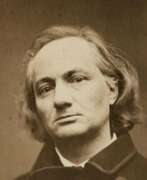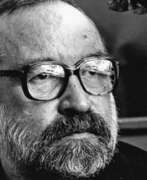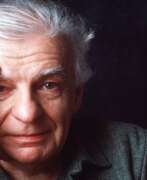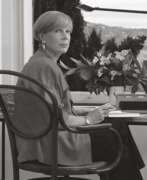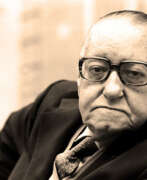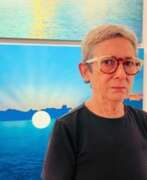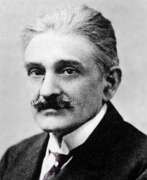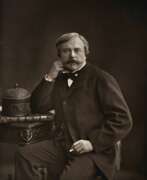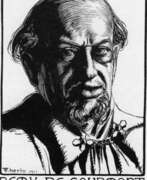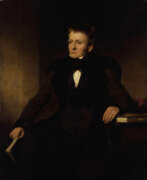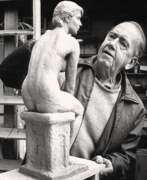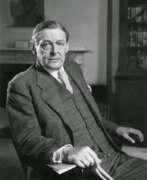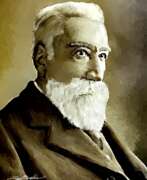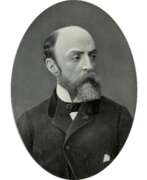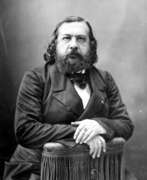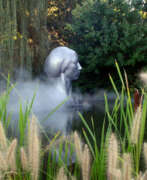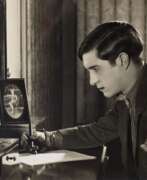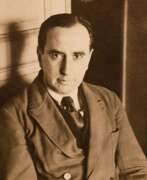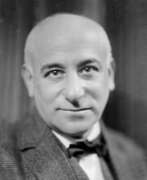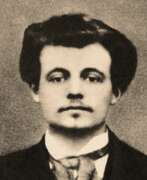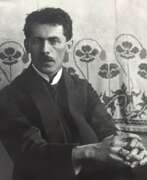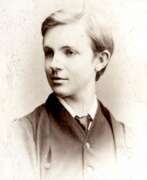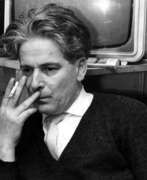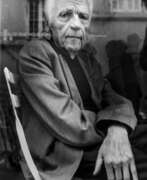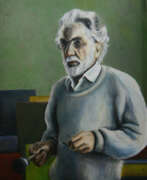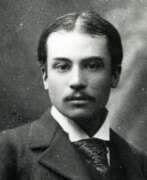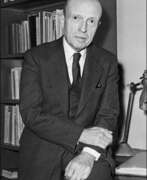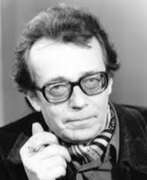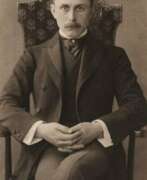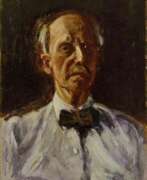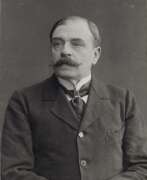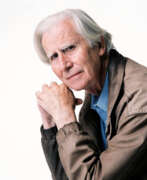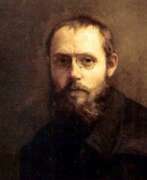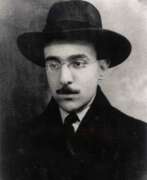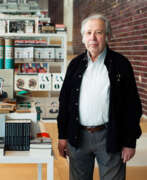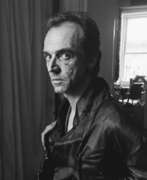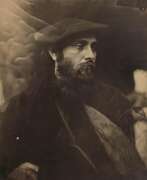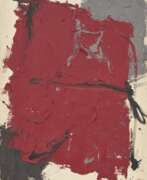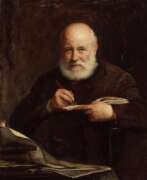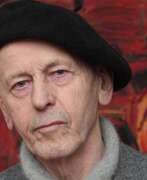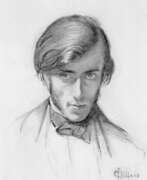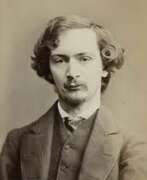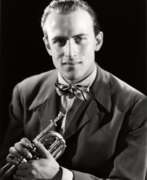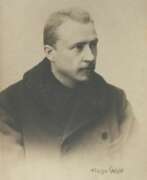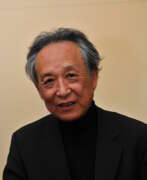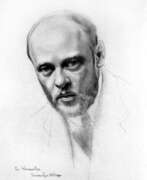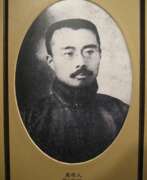Critics
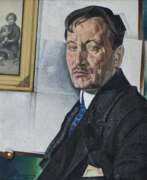

Yury Pavlovich Annenkov (Russian: Юрий Павлович Анненков) was a prominent Russian artist, renowned for his avant-garde book illustrations and portraits, as well as his work in theater and cinema. Born in 1889 in Petropavlovsk, Russian Empire, and passing away in 1974 in Paris, France, Annenkov's artistic journey was shaped by the tumultuous times he lived in. His work is celebrated for capturing the essence of an era marked by revolution and change, employing a style that is both dynamic and reflective of the Synthetism movement, emphasizing the synthetic essence of his subjects.
Annenkov's early years were spent in St. Petersburg, where he was influenced by prominent figures and movements of the time. He honed his skills in Paris, working in the studios of Maurice Denis and Félix Vallotton, and later, his talents led him to design iconic works for the Bolshevik government, such as the staging of "The Storming of the Winter Palace". His acclaimed book "Portraits," published in 1922, featured 80 pictures of key Russian art figures, showcasing his exceptional talent in capturing personalities through his art.
In 1924, Annenkov left Soviet Russia, eventually settling in Paris, where he continued to flourish as an artist, working on landscapes, female portraits, interiors, and achieving success in the film industry as a costume designer, notably receiving an Academy Award nomination for his work.
Among his notable works are "Dreams of a Provincial (Borovichi)," "Portrait of Elena Borisovna Annenkova," "June. Forest," "Portrait of Miron Abramovich Sherling," "Portrait of A.M. Gorky," and the "Illustration for the poem 'The Twelve' by A.A. Blok," each piece highlighting his ability to blend academic drawing with avant-garde techniques.
For collectors and art and antiques experts, Annenkov's works offer a glimpse into the rich tapestry of 20th-century Russian art, marked by its innovation, depth, and historical significance. His legacy continues to inspire and captivate audiences worldwide.
To stay updated on sales and auction events featuring Yury Pavlovich Annenkov's work, sign up for our newsletter. This subscription ensures you'll be the first to know about new product sales and auction events related to this remarkable artist.
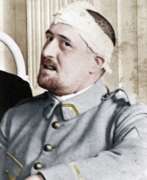

Guillaume Apollinaire, real name Wilhelm Albert Vladimir Apollinaris de Wąż-Kostrowicki, a French poet of Polish descent, was a towering figure in the early 20th century's literary and art scenes. Known for his experimental verse and support of avant-garde art movements like Cubism and Surrealism, Apollinaire's work pushed the boundaries of traditional aesthetics and inspired a generation of artists and writers.
Guillaume Apollinaire's literary contributions were vast and varied. He was an early advocate for Cubism, a relationship most prominently seen in his collaborations with artists like Pablo Picasso. He not only wrote about art but also collected it, surrounding himself with works by modernist masters such as Henri Rousseau and Georges Braque. His Paris apartment was a small museum of modern art, filled with pieces he often sold to support his literary endeavors. This vibrant artistic environment fueled his creativity, leading to major works such as Alcools and Calligrammes, which explored the possibilities of poetic form and typography to represent visual and verbal content in a unified way.
Despite his innovative work in poetry and art criticism, Guillaume Apollinaire's life was marked by personal challenges, including a grievous injury during World War I. Yet, even these difficulties did not hinder his prolific output. Among his notable works during this period was the play Les Mamelles de Tirésias, which was performed in 1917 and is considered a precursor to theatrical Surrealism.
Apollinaire's influence extended beyond his lifetime, particularly through his mentoring of future Surrealist leaders like André Breton. His forward-thinking approach to art and literature made him a central figure in the transition from traditional to modernist forms in both fields.
For collectors and experts in art and antiques, Guillaume Apollinaire's work represents a nexus of literary brilliance and pivotal artistic movements. His life and work provide fascinating insights into the dynamic and transformative world of early 20th-century art and literature.
Sign up for updates on auctions and sales events featuring items related to Guillaume Apollinaire. Stay informed about opportunities to acquire unique artifacts that celebrate his legacy in the realms of poetry and art.
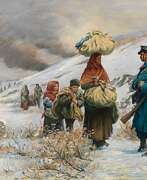

Rodolphe Auguste Bachelin was a Swiss landscape, history and portrait painter as well as a writer, historian and art critic.
He was interested in the Lombardy War of 1859 and in particular in the Franco-Prussian War of 1870 to 1871, which provided him with several subjects with its troop surge at Les Verrières. The Neuchâtel painter was greatly influenced by the writings of Rodolphe Töpffer and aspired to become a Swiss national painter.


Alexandre Nikolayevich Benois (Russian: Алекса́ндр Никола́евич Бенуа́) was a distinguished Russian artist, art critic, and historian, celebrated for his pivotal role in the art world, particularly in painting and stage design. Born into a family deeply embedded in the cultural fabric of Russia, Benois was instrumental in the development of the Russian artistic movement at the turn of the 20th century. His contributions to art and culture extend beyond his vivid paintings; he was a founding member of the World of Art (Mir iskusstva), a significant art movement and magazine that sought to elevate Russian artistry on the global stage.
Benois' work is notable for its intricate detailing, vibrant use of color, and the ability to convey deep narratives within each piece. His designs for ballets such as "Petrushka" and "The Sleeping Beauty" remain iconic, showcasing his mastery over the fusion of visual art and performance. This synthesis not only enhanced the ballets’ visual appeal but also deepened the audience's engagement with the narrative. Museums and galleries around the world, including the Russian Museum in St. Petersburg and the Tretyakov Gallery in Moscow, house his works, underscoring his global recognition and the enduring appeal of his artistic vision.
For collectors and experts in art and antiques, Benois' oeuvre represents a fascinating exploration of early 20th-century Russian culture, art, and the avant-garde movement. His ability to blend traditional Russian themes with the modernist trends of his time makes his work a valuable study in the evolution of modern art. Those interested in the rich tapestry of Russian cultural history and the interplay between art and performance will find Benois' contributions invaluable.
To stay informed about new discoveries, sales, and auction events related to Alexandre Nikolayevich Benois, we encourage you to sign up for updates. This subscription is tailored specifically for enthusiasts eager to deepen their appreciation and understanding of Benois' legacy, ensuring you're the first to know about opportunities to acquire pieces connected to this luminary of Russian art.
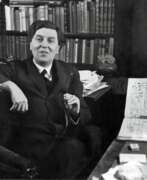

Alban Berg, full name Alban Maria Johannes Berg, was an Austrian composer, representative of expressionism in music, teacher and music critic.
A meeting with composer Arnold Schoenberg (1874-1951) in September 1904 played a decisive role in Berg's life. The latter saw talent in the young man and taught him free of charge for six years. In 1907 Berg performed his "Sonata for Piano" for the first time.
Alban Berg was very self-critical and worked on pieces for a long time. He composed orchestral music (including "Five Orchestral Songs," 1912), chamber music, songs, and two groundbreaking operas, "Wozzeck" (1925) and "Lulu" (1937). "Wozzeck," the most frequently performed theater work in the atonal idiom, is Berg's first attempt to address social issues within the framework of opera. However, its premiere turned into a scandal, with critics even calling the composer a musical fraud.
Only a few years after his death, Alban Berg was widely recognized as a composer of expression. He broke with tradition and mastered a radical technique, but at the same time he combined the old and the new and created, together with Schoenberg and Webern, the New Viennese School of the 20th century. Alban Berg was also an outstanding teacher of composition.
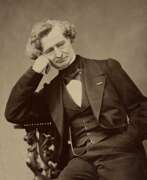

Hector Berlioz, full name Louis-Hector Berlioz, was a French composer, conductor, and music critic of the Romantic era.
Berlioz received his primary education from his father, an enlightened physician, who gave him his first lessons in music and Latin. By the age of 12, he was already composing music for local chamber ensembles and learning to play the guitar and flute with virtuosity. In 1821 his father sent him to Paris to study medicine, and he received his first scientific degree. But in parallel, he often visited the Paris Opera, where he studied the entire repertoire on the score.
Against the will of his parents, Berlioz took a compulsory course of study at the Conservatory of Paris and in 1830 received the Prix de Rome. In Italy he met the Russian composer Mikhail Glinka and became lifelong friends with Mendelssohn. From 1832 Berlioz worked for 30 years as a music critic for periodicals. He was acquainted with many of the leading writers and musicians of his time, including Victor Hugo, Alexandre Dumas, Niccolò Paganini, and George Sand.
Berlioz adored the works of Weber and Beethoven, as well as Gluck, and tirelessly introduced audiences to their works. As a result of his many trips as a conductor to Germany, Belgium, England, Russia, and Austria-Hungary, he taught the leading orchestras of Europe a new style.
Berlioz during these years wrote, among other things, the "Symphonie Fantastique" (1830) that made him famous, and the symphony "Harold in Italy" (1834). After a concert in 1838, where he conducted their performance, the famous violin virtuoso Paganini declared Hector Berlioz a continuator of Beethoven's musical traditions and presented him with 20,000 francs. A grateful Berlioz wrote a choral symphony, Romeo and Juliet, dedicated to Paganini.
In 1844, Berlioz created "Treatise on Modern Instrumentation and Orchestration", which is not just a technical manual, it served as an introduction to the aesthetics of expression in music for generations to come. Among Berlioz's dramatic works, The Damnation of Faust (1846) and The Nativity (1854) are world-famous.
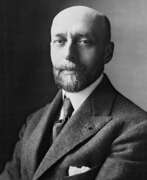

René Boylesve, birth name René Marie Auguste Tardiveau, is a French writer and literary critic, a member of the Académie Française.
Boylesve was educated at Poitiers, Tours, and Paris, studying humanities and fine arts, natural sciences, and law. Ten years later, under his mother's maiden name, he wrote his first novel, The Physician of the Lady of Nean (1894). These were followed by other books, and then came the series known as the "Touraine novels": "Mademoiselle Cloke" (1899), "Beke" (1901), "The Child at the Balustrade" (1903), "The Educated Girl" (1909) and others. In these works, the author expertly depicts the mores of the provincial petty bourgeoisie. With a richly detailed style and characteristic irony Boylesve tells about the triumph of conventional values over artistic and spiritual aspirations.
In 1918 René Boylesve was elected a member of the French Academy.
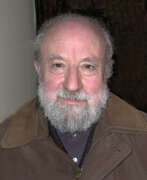

Michel Butor was a French writer and poet, associated with the Nouveau Roman literary movement of the 1950s and 1960s. He was known for his experimental writing style, which often challenged traditional narrative structures and explored the relationship between language, identity, and memory.
Butor studied philosophy and literature at the Sorbonne in Paris. In 1954, he published his first novel, "Passage de Milan," which established his reputation as a leading figure of the Nouveau Roman movement.
Throughout his career, Butor wrote more than twenty novels, as well as essays, poetry, and other works. His writing often incorporated elements of travelogue and autobiography, and he frequently collaborated with visual artists on projects that combined text and image.
In addition to his literary work, Butor was a respected teacher and critic, and he lectured at universities around the world. He was awarded numerous honors and awards for his contributions to French literature, including the Prix Renaudot in 1957.
His legacy as an innovative and influential writer continues to be celebrated by literary scholars and readers around the world.
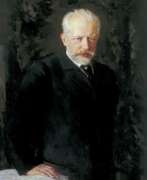

Petr Ilich Chaikovskii (Russian: Петр Ильич Чайковский) was a great Russian composer, teacher, conductor and music critic.
Petr was born into the family of a mining engineer; later his father became manager of the Alapaev and Nizhnekamsk factories and director of the Technological Institute in St. Petersburg. Already at the age of five Peter began to learn to play the piano and compose. Educated as a lawyer, he was appointed to the Ministry of Justice and retired in 1867.
In 1865, Chaikovskii graduated with honors from the St. Petersburg Conservatory, composing several significant works during his years of study. From 1866-1878, Chaikovskii was a professor at the Moscow Conservatory, translated several musical-theoretical works, and wrote A Guide to the Practical Study of Harmony. In 1868 he made his first appearance in the press as a music critic, and later worked as a music reviewer for the Moscow newspapers Sovremennaya Annals and Russkiye Vedomosti.
Petr Ilich destroyed his first operas - "Voevoda" and "Undina" - apparently dissatisfied with the result, but his next concertos and symphonies, the operas "Oprichnik" (1874) and "Vakula the Blacksmith" (1876) were already quite successful. In 1877 patron of the arts and admirer Nadezhda von Meck arranged for Chaikovskii to receive an annual subsidy of six thousand roubles, thanks to which he devoted his later life to composing, and from 1888 the composer also received an annual pension of three thousand roubles from the Russian Emperor Alexander III.
From the 1880s Chaikovskii became known not only in Russia but also abroad: he gave numerous concerts in European cities, and his music was recognized and loved in the USA.
A man of extraordinary sensitivity, Petr Chaikovskii revealed in music the inner world of man from lyrical intimacy to the deepest tragedy, creating the highest examples of operas, ballets, symphonies and chamber works. During this period he wrote the operas "Eugene Onegin" (1878), "The Maid of Orleans" (1879), "Mazepa" (1883), "Cherevichki" (1885), "Queen of Spades" (1890), "Iolanta" (1891) and others. And also ballets "Swan Lake" (1876), "Sleeping Beauty" (1889), "The Nutcracker" (1892). All of these works are still going with enduring success in all the world's theaters.
His cycle The Seasons and his Sixth Symphony ("Pathetique") are also widely known. Chaikovskii 's six symphonies, the symphony "Manfred" (1885), "Italian Capriccio" (1880), three concerti for piano and orchestra (1875-93), a concerto for violin and orchestra, "Variations on a Rococo Theme for Cello and Orchestra" (1876), a piano trio "In Memory of the Great Artist" (1882), and romances belong to the world's masterpieces.
Chaikovskii died unexpectedly, having contracted cholera during an epidemic in St. Petersburg. In honor of the composer in 1958, one of the most prestigious performing competitions was organized - the International Chaikovskii Competition, which is held in Moscow every four years. The city of Chaikovskii in the Perm Region, streets in many cities in the former Soviet Union, and a crater on Mercury are named in the composer's honor. The Moscow State Conservatory bears Tchaikovsky's name. Petr Chaikovskii is one of the most performed composers all over the world.
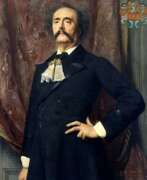

Jules Barbey d'Aurevilly, born Jules Amédée Barbey d'Aurevilly, was a French writer, critic and essayist.
After studying law at the University of Caen, d'Aurevilly gained popularity in 1852 as a literary critic for the Bonapartist newspaper Le Pays, which was influential among the decadents of the late 19th century.
In literature, d'Aurevillys specialized in tales of macabre mysteries that explored ulterior motives and hints of evil, but without the supernatural. He was a decisive influence on writers such as Auguste Villiers de l'Isle-Adam, Henry James, and Marcel Proust.


Alphonse Daudet was a French novelist and short-story writer, best remembered for his sentimental tales of provincial life in southern France. Born in Nîmes in 1840, Alphonse Daudet's early life was marked by financial hardship, influencing much of his later work. He moved to Paris with his brother Ernest and quickly immersed himself in the literary world, publishing his first collection of poems, Les Amoureuses, at a young age.
Alphonse Daudet's career flourished with notable works such as Le Petit Chose, Tartarin de Tarascon, and Lettres de Mon Moulin, which highlighted the charm and simplicity of rural life in Provence. His storytelling, often infused with humor and satire, made significant contributions to French literature, capturing the essence of Provencal culture.
Despite his literary success, Alphonse Daudet's personal life was fraught with challenges, including a long-term illness that he bravely depicted in his later works. He passed away in Paris in 1897, leaving behind a legacy celebrated for its profound impact on regionalist literature and its vivid portrayal of French life and culture during the 19th century.
For those interested in the intricate tapestry of French literature and the enchanting allure of Provence, Alphonse Daudet's works offer a gateway to the past, brimming with the richness of its regional heritage and the timeless appeal of its narratives. To delve deeper into Daudet's life and explore his contributions to literature, subscribing to updates on related sales and auction events can be a rewarding pursuit for collectors and enthusiasts alike, ensuring they remain informed about opportunities to engage with his enduring legacy.
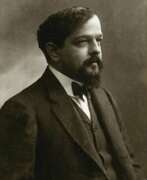

Claude Debussy, full name Achille-Claude Debussy, was a French composer, conductor, pianist and critic, a leading representative of Impressionism in music.
Debussy showed musical talent early and entered the Paris Conservatory. He lived in poverty, but at the same time he learned a luxurious life: the Russian philanthropist and the richest woman, Nadezhda Filaretovna von Meck, took him under her tutelage, he mused with her children and traveled with her around Europe. His sensitive nature could not but respond to all these contrasts. During this period Debussy created one of his masterpieces, Moonlight from the Bergamo Suite.
Debussy spent the summers of 1881 and 1882 near Moscow, at the von Meck estate. In this house Debussy became acquainted with the new Russian music of Tchaikovsky, Borodin, Balakirev and Modest Mussorgsky. His stay in Russia had a beneficial effect on the young musician's development. Debussy was also influenced by the work of Richard Wagner. He developed a highly original system of harmony and musical structure that in many ways expressed the ideals to which the Impressionist and Symbolist artists and writers of his time aspired.
Debussy toured with concerts and conducted his works in England, Italy, Russia and other countries. Claude Debussy's famous works include the Prelude to the Afternoon of a Faun (1894), the operas Pelléas et Mélisande and The Sea (1905), the suite Children's Corner (1906-1908) and the orchestral cycle Images (1912). In 1913 he composed music for the ballet Games, which was performed by Sergei Diaghilev's Russian Seasons company in Paris and London.
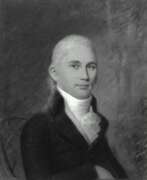

Joseph Dennie was an American writer, journalist, and major literary figure of the early 19th century.
Dennie graduated from Harvard College, became a lawyer, but became active in writing. In 1801, he founded a periodical called The Port Folio, which became the most prominent literary weekly of its time in America. It was also the first important political and literary journal in the United States.
As founder of the Tuesday Club, Dennie was the center of Philadelphia's aristocratic literary circle in the early 19th century and for a time was the leading literary critic in the country. He ridiculed the simplistic and crude nature of Native Americans and opposed democratic innovations. He also encouraged talented young writers.
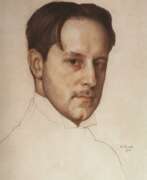

Mstislav Valerianovich Dobuzhinsky (Russian: Мстислав Валерианович Добужинский), a Russian Artist and Painter, stands as a towering figure in the world of fine arts. Born into the vibrant cultural tapestry of Russia, Dobuzhinsky specialized in painting and graphic art, leaving an indelible mark on the artistic landscape. Known for his meticulous attention to detail and a profound ability to capture the essence of urban and natural landscapes, his works resonate with art collectors and experts alike.
Dobuzhinsky was a key member of the Mir Iskusstva (World of Art) movement, which revolutionized Russian art at the turn of the 20th century. His work is celebrated for its unique blend of realism and symbolism, capturing the changing face of cities and the timeless beauty of the countryside with equal finesse. Notable for his cityscapes, Dobuzhinsky's art delves into the soul of urban environments, portraying their architecture and inhabitants with a deep sense of empathy and understanding.
His oeuvre is a testament to the rich cultural heritage of Russia, and his pieces are proudly displayed in prestigious museums and galleries worldwide. Collectors and art enthusiasts cherish Dobuzhinsky's works for their historical significance and artistic merit. His ability to convey the complexity of the human spirit and the beauty of the mundane makes his art a valuable asset for any collection.
For those captivated by the allure of Russian culture and the finesse of early 20th-century art, Mstislav Valerianovich Dobuzhinsky's creations offer a window into a world of exquisite beauty and profound emotion. We invite collectors and experts in art and antiques to stay abreast of new product sales and auction events featuring Dobuzhinsky's work. Sign up for updates today and ensure you never miss an opportunity to own a piece of Russian art history.
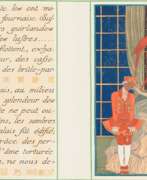

Albert Flament was a French journalist and writer.
Flament was a well-known critic and journalist. He used the pseudonym Sparklet for his columns in L'echo de Paris, and also worked for Revue de Paris and Fémina magazines.
One of his notable works is the text to Georges Barbier's magical Art Deco drawings in the album Characters of Comedy (1922). Albert Flament's description of the great roles and characters of the world theater is an absent-minded meditation, a half-sleep.
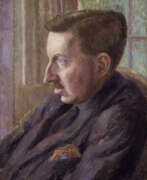

Edward Morgan Forster, English novelist, essayist, and critic, was a prominent literary figure of the early twentieth century. Born on 1 January 1879 in London and died on 7 June 1970 in Coventry, Forster's work was celebrated for its profound critique of social conventions, class distinctions and hypocrisy in British society. A member of the influential Bloomsbury group, Forster did not confine himself to novels, but also wrote essays, gave speeches and hosted programmes.
E. M. Forster was characterised by wit and a fine sense of irony. His novels, particularly A Room with a View, Howards End and A Passage to India, were recognised for their well-crafted plots and insightful social commentary. Not only have these works earned them a place in literature, but they have also been nominated for the Nobel Prize for Literature. The films A Room with a View and Howards End won Academy Awards and have been recognised and celebrated in film archives and retrospectives by film institutions.
Edward Morgan Forster's novels serve as critical social commentary of their time and remain relevant to this day. Those interested in the intersection of literary art and its influence on film can look to first editions of his works or objects associated with acclaimed film adaptations to add to their collections.
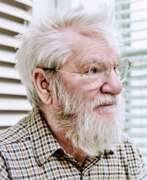

Daniel Graham was an American visual artist, writer, and curator in the writer-artist tradition. In addition to his visual works, he published a large array of critical and speculative writing that spanned the spectrum from heady art theory essays, reviews of rock music, Dwight D. Eisenhower's paintings, and Dean Martin's television show. His early magazine-based art predates, but is often associated with, conceptual art. His later work focused on cultural phenomena by incorporating photography, video, performance art, glass and mirror installation art structures, and closed-circuit television.
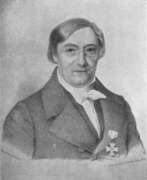

Johann Gottfried Gruber was a German critic and literary historian.
A graduate of the University of Leipzig, Gruber was later appointed professor at the University of Wittenberg, and in 1815 he became professor of philosophy at Halle. Gruber is the author of numerous historical and philosophical works.
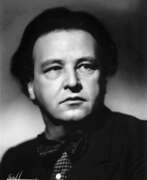

Arthur Honegger was a Swiss-French composer, violinist and cellist, and music critic.
Honegger was born into a Swiss family but spent most of his life in France. He studied at the Zurich and Paris conservatories. After World War I, he joined Les Six, a group of young composers that also included Georges Auric, Germain Taillefer, Francis Poulenc, Darius Millau, and Louis Durey.
In the early 1920s Honegger asserted himself with strong orchestral and chamber works, including Pacific 231 (inspired by the sounds of a steam locomotive) and Pastorale d'Eté. In his dramatic oratorios Joan of Arc at the stake and Dance of the Dead, he turned to mysticism and religious meaning, which informed many of his later works.
Honegger was a prolific composer and composed several operas and a ballet, oratorios, five symphonies, and several chamber works for strings. He also wrote music for several movies. Honegger's music is written in a relaxed musical style that combines the French avant-garde with the large forms and massiveness of the German tradition.
Honegger is also known for his critical publications and musicological essays, particularly on composer Igor Stravinsky, whom he considered a genius and an example.
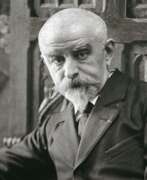

Joris-Karl Huysmans, real name Harles-Georges-Marie Huysmans, was a French writer and poet, the first president of the Goncourt Academy.
Huysmans' father was Dutch, and he always emphasized this fact. At the age of 20, the aspiring writer began working as an official in the French Ministry of the Interior, where he served all his life.
Huysmans received the greatest fame thanks to the novel À rebours ("Against Nature"). The main appeal of this writer's work lies in its autobiographical content. And his style is characterized by a wide vocabulary of the French language, a wealth of detailed and sensual descriptions, as well as sharp satirical wit. The novels are also notable for their encyclopedic documentation, ranging from a catalog of decadent Latin authors in À rebours to a discussion of the symbolism of Christian architecture in La Cathédrale.
In his work, Huysmans expresses a distaste for modern life and a deep pessimism, but in his writings one can trace the stages of intellectual life in late nineteenth-century France. Joris-Karl Huysmans was one of the earliest proponents of Impressionism. He was also a renowned literary critic and one of the founders and first president of the Goncourt Academy.
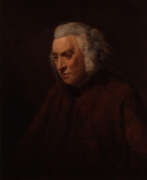

Samuel Johnson was an English writer who made lasting contributions as a poet, playwright, essayist, moralist, critic, biographer, editor and lexicographer. He was a devout Anglican, and a committed Tory. The Oxford Dictionary of National Biography calls him «arguably the most distinguished man of letters in English history». James Boswell's Life of Samuel Johnson was selected by Johnson biographer Walter Jackson Bate as «the most famous single work of biographical art in the whole of literature».
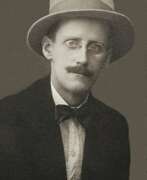

James Augustine Aloysius Joyce was an Irish writer and poet, journalist and literary critic.
Joyce is a representative of the modernist avant-garde movement and is considered one of the most influential writers of the 20th century. Joyce's best known works are the novels Ulysses (1922) and A Portrait of the Artist as a Young Man, and the short story collection The Dubliners.
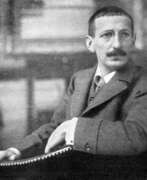

Walter Leistikow was a German painter of the late nineteenth and early twentieth centuries. He is known as a landscape painter, graphic artist, designer and art historian, a representative of the Jugendstil.
Early in his career Leistikow was one of the founders of the art group "Association of Eleven", which advocated modern art, rejecting academism. His landscapes, inspired by the Barbizon School, evolved toward simplification, sometimes with Art Nouveau influences. The artist sought to stylize landscapes, eschewing excessive detail in favor of silhouettes and blurred lines.
He also designed furniture, carpets and wallpaper, and in 1902 created trading cards for the Stollwerck chocolate company.
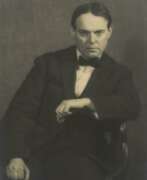

Pierre Mac Orlan, real name Pierre Dumarchey, is a French writer, poet, screenwriter, playwright, artist and journalist.
Pierre Dumarchey spent his youth leading a bohemian lifestyle, but by the age of 20 he had already published several collections of short stories with his own illustrations. He socialized with many contemporary writers and artists, played the accordion, and many of his songs were quite popular in cabarets. In World War
I in 1916, Pierre Dumarchey was wounded, after which he worked as a war correspondent. In the late 1920s, he became an influential critic of film and photography. And later became a famous writer under the pseudonym Pierre Mac-Orlan. Based on his most famous novel Quai des Brumes ("Port of Shadows"), French director Marcel Carné made a movie of the same name in 1938.
In addition to his numerous novels, Mac-Orlan published under various pseudonyms in erotic magazines. Pierre Mac-Orlan was a very prolific writer: in 1969-1971, a collection of his works in 24 volumes was published, which, however, did not include his many erotic works.


Anne-Louise-Germaine Necker, Baroness of Staël-Holstein, known as Madame de Staël, was a French writer, literary theorist, and publicist.
She was born into a Swiss family where her father was a banker and then finance minister to King Louis XVI, and her mother ran a brilliant literary and political salon in Paris where Voltaire, Diderot, and Hume frequented. Young Necker received a brilliant education, she absorbed the intellectual environment with great curiosity, becoming a witty and well-read conversationalist.
In 1786, she married the Swedish ambassador to Paris, Baron Eric de Staël-Holstein. It was a marriage of convenience, which ended in 1797 formal divorce.
Madame de Staël became known not only for her stunning and versatile works, but also for her enormous influence on the intellectual climate of that 19th century. During her lifetime she was known as a novelist, but she became much more famous as a political philosopher, literary critic, and theorist of Romanticism. Madame de Staël was an implacable opponent of Napoleon I and traveled around Europe for a decade during his reign from 1803. In 1810, the writer published one of her most famous and influential works, On Germany. She returned to Paris in 1814, after the fall of Napoleon, and wrote "Reflections on the Principal Events of the French Revolution."
In her travels, Madame de Staël met many politicians, artists and writers and was known for her cosmopolitanism and feminism. Madame de Staël epitomized the European culture of her time, combining ideas from neoclassicism to romanticism in her glittering salon for leading intellectuals.
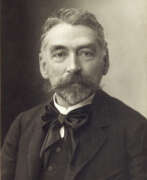

Stéphane Mallarmé was a French poet and critic. He was a major French symbolist poet, and his work anticipated and inspired several revolutionary artistic schools of the early 20th century, such as Cubism, Futurism, Dadaism, and Surrealism.
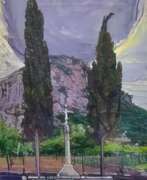

François Maret, also known as Frans van Ermengem or Frans Ermengem, was a Belgian poet, painter and art critic. He was recognized for his role as an editor at the Tribune dramatique and his unwavering support for General Franco during the Spanish Civil War.
Maret translated Dutch art criticism works and authored poetry volumes, often illustrating them under a pseudonym. Additionally, he created new illustrations for books by Charles Baudelaire and Charles van Lerberghe.
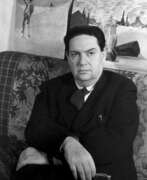

Darius Milhaud was a French modernist composer, conductor, music critic and teacher.
Born into a Jewish family, Milhaud studied at the Paris Conservatoire with Paul Dukas and Vincent d'Indy. During his years of study, he met his future colleagues in Les Six, A. Honegger and J. Taifer. Around 1913, Milhaud began to use bitonality and polychords in his music. He studied polytonality (the simultaneous use of different keys) and consistently developed this technique.
Milhaud's bold, individual style was particularly evident in the ballets Man and His Desire (1918) and The Creation of the World (1923). He wrote incidental music for Claudel's Protea (1920). His other works include the operas Christophe Colomb (1930), David (1954), Medea (1939), and others, totaling 16 operas. A prolific composer, Milhaud wrote more than 400 works, including scores for radio and film, arrangements of the Jewish Sabbath morning service, symphonies, and choral works. Among chamber works, the composer composed many concertos for strings and other instruments.
In 1940 Millau became a professor at Mills College in Oakland, California; in 1947 he was one of the founders of the Summer Conservatory of Music at the Music Academy of the West in California. After 1947, he also taught at the Paris Conservatory of Music almost until the end of his life. His students include many future jazz and classical composers.


John Miller is an American artist, sculptor, writer, critic, and musician who lives in New York and Berlin.
He studied at the California Institute of the Arts and worked as a gallery manager for the Dia Art Foundation. Miller is currently a professor of professional art history practice at Barnard College.
His work includes photographs, installations, live mannequin exhibitions, and videos in response to current political events and sentiments. Miller has also authored critical works on representation in art.
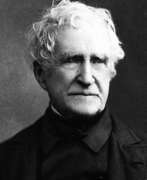

John Neal is an American writer, editor, and community activist.
Neal served for many years as editor of the Yankee and Boston Literary Gazette periodicals, publishing critical essays and always striving to promote American literature. While living in England in the 1820s, he wrote a long series of articles published in Blackwood's Edinburgh Magazine, essentially telling the story of American literature, which helped change the perception of American art in Britain.
Back in America, he used his popularity and influence to support young writers such as Poe and Whittier. In particular, it was Neale who put Edgar Allan Poe's very name in print and the very first words of encouragement to his work.
Neal's early recognition of Poe's genius was crucial to the budding talented writer's career. John Neel also wrote long adventure novels with complex plots, of which "Rachel Dyer" is considered the best, and "Bag Otter, Chief of the Oneida" and "David Whicher" are his best stories.
John Neal was also a very active social and political activist. In his literary work and lectures, he constantly addressed issues such as feminism and women's rights, slavery, the rights of free black Americans and American Indians, temperance, sports, and many others.
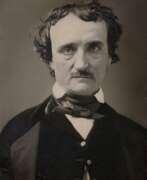

Edgar Allan Poe was an American writer and poet, editor and critic who created a form of classical detective fiction in an atmosphere of mystery and horror.
In prose, Allan Poe wrote mostly short stories. His novella The Murders in the Rue Morgue (1841) initiated the modern detective story, and his poem The Raven (1845) is among the most famous in American literature. Romanticism of the first third of the 19th century was shrouded in a fog of Satanism and the occult, which obviously influenced the work of Poe, whose personality was subtle, dualistic, and multifaceted.
Most of Poe's best works are permeated with horror and sorrow, but in life the poet was a pleasant conversationalist with a great sense of humor and a talented orator. All this, coupled with the genius of the writer-narrator provided him with a prominent place among the world-famous writers. Edgar Allan Poe revolutionized the horror genre. He was one of the first to bring deep, visceral, psychological horror into literature. In his stories, the true monster often turned out to be the capacity for evil that lurks within every human being.
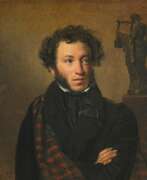

Aleksandr Sergeevich Pushkin (Russian Александр Сергеевич Пушкин) was a Russian poet, playwright and prose writer who laid the foundations of the Russian realist movement, literary critic and literary theorist, historian, publicist and journalist.
Pushkin was born in Moscow into an aristocratic family. From childhood he showed a unique literary talent and passion for words. His first poems were written in his school years, and since then his path became inseparable from the world of literature.
One of Pushkin's most famous works is Eugene Onegin, a magnificent novel in verse that plumbs the depths of the human soul and explores many themes such as love, friendship, art and society. In this work, Pushkin created an unrivaled image of the Russian aristocrat and poet, Eugene Onegin. Pushkin was also a master of lyric poetry, writing many ineffably beautiful poems that expressed the feelings and emotions of people in a variety of situations. His poems about love, nature and homeland remain eternal and inspire new generations of poets.
Aleksandr Sergeevich Pushkin was a Russian poet, playwright and was also a public figure and a man with a wide outlook. He published articles in which he expressed his opinion on social and political issues of his time. His passion for freedom and justice was always evident in his works and in his life.
Aleksandr Sergeevich Pushkin died on February 10, 1837 as a result of a duel, but his work remains alive and eternal. His literary legacy has left an indelible mark on world literature, and his work continues to inspire fans around the world.
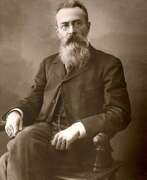

Nikolai Andreevich Rimskii-Korsakov (russian: Николай Андреевич Римский-Корсаков) was a Russian composer, teacher and conductor, music critic, and member of the Mighty Handful.
Originally from an old noble family, Rimskii-Korsakov studied piano from the age of six and by the age of nine was already trying to compose music. After graduating from the St. Petersburg Naval School, in 1862-1865 he was on a round-the-world voyage, during which he was made an officer. He participated in an expedition to the shores of North America, visited Great Britain, Spain, Norway. In 1873-1884 he worked as an inspector of military bands of the fleet.
During his studies at the school and during the expedition Nikolai Rimskii-Korsakov continued to study music. His acquaintance in 1861 with the composer Miliy Balakirev and his circle "The Mighty Handful", which included composers Caesar Cui, Modest Mussorgsky and Alexander Borodin, became the impetus for his work. Rimskii-Korsakov 's aesthetic views and worldview were formed under the influence of the "Mighty Handful" and its ideologist V. Stasov.
Nikolai Rimskii-Korsakov was very prolific, and almost all of his works are based on folk and classical Russian literature and melodies. He composed 15 operas, including The Pskovite Girl (1872), May Night (1879), The Snow Maiden (1881), Sadko (1896), The Tsar's Bride (1898), The Tale of Tsar Saltan (1900), Kashchey the Immortal (1902), The Tale of the Invisible City of Kitezh..." (1904), The Golden Cockerel (1907). Fragments from some operas have become the most performed in the world, among them "The Song of the Indian Guest" from "Sadko" and "The Flight of the Bumblebee" from "Saltan".
The composer's works also include three symphonies (the first of which he completed while sailing around the world), symphonic works, instrumental concertos, cantatas, chamber instrumental, vocal and sacred music. In 1886-1890 Rimskii-Korsakov conducted the "Russian Symphonic Concertos" in St. Petersburg, and in 1898 - in Moscow, at the same time he was also engaged in teaching. In 1871 he became a professor at the St. Petersburg Conservatory, where he taught classes in practical composition, instrumentation and orchestration.
As a teacher, Rimskii-Korsakov trained over 200 composers and musicians, including Alexander Glazunov, Mikhail Gnesin, Alexander Grechaninov, Anatoly Lyadov, Sergei Prokofiev, and Igor Stravinsky. He also published several textbooks on harmony and orchestration. Rimskii-Korsakov's work had a great influence on the development of Russian classical and foreign music.
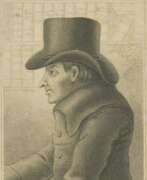

Joseph Ritson was a British antiquarian, critic, writer and editor.
He had a law degree, but preferred to study literary works. Ritson scrupulously searched for factual and other errors in authors to then publish them in his critical materials.
However, Joseph Ritson became famous as an editor of collections of ballads about Robin Hood and old folk literature. In their design they far surpassed anything that had previously appeared in the literary world, distinguished by authorial erudition and accuracy. Ritson also published collections of children's poems.
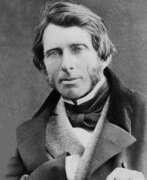

John Ruskin was an English philosopher, art historian, and polymath of the Victorian era, celebrated for his profound influence on art, architecture, and society. With a diverse array of interests ranging from geology to literature, John Ruskin's contributions to the cultural and intellectual fabric of the 19th century were unparalleled. His notable works include "Modern Painters," "The Seven Lamps of Architecture," and "The Stones of Venice," where he explored the deep connections between nature, art, and society. Ruskin's advocacy for the Pre-Raphaelites and his critical stance against industrialization's impact on art and architecture marked him as a pivotal figure in the Arts and Crafts Movement. His teachings inspired generations, including William Morris, to value craftsmanship over mass production, anticipating modern concerns with environmentalism and sustainability.
John Ruskin's early life, shaped by his parents' influence and his exposure to the art and religious fervor of his time, laid the foundation for his later views that championed a return to nature and the importance of truth in art. His critical writings, not just limited to art but extending to social criticism, embodied a vision for societal reform that emphasized ethics, aesthetics, and the human connection to the natural world. John Ruskin's legacy is reflected in his ability to inspire both contemporaries and future movements, highlighting his role as a visionary thinker whose ideas transcended the boundaries of his time.
For collectors and experts in art and antiques, John Ruskin's life and work offer a rich tapestry of insights into the Victorian era's cultural and aesthetic debates. His profound impact on art criticism, architectural theory, and social philosophy makes him a figure of enduring significance in the history of art and culture.
To stay informed about new product sales and auction events related to John Ruskin, sign up for updates. This subscription is a gateway to exploring the legacy and continued relevance of one of the most influential figures in the world of art and culture.
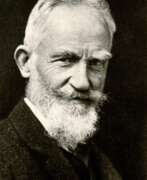

George Bernard Shaw was an Irish playwright, novelist and literary critic, socialist propagandist and journalist, winner of the 1925 Nobel Prize for Literature.
George Bernard was born into a poor noble family and, growing up, suffered greatly from that poverty. After a decade of failure on the literary field, Bernard became an active member of the Fabian Society, a middle-class socialist group founded in 1884, which sought the gradual transformation of English society.
He began working as a journalist and writing plays, which soon enough became popular. In The Man and the Superman, Shaw laid out his philosophy that humanity is the last stage of a purposeful and eternal evolutionary movement of "life force" toward ever higher forms of life. By far his most popular play is Pygmalion, a humane comedy about love and the English class system. But George Bernard Shaw was not only the best comic playwright of his time. Some of his stage works - Caesar and Cleopatra, The Man and Superman, Major Barbara, House of Broken Hearts, and St. Joan - are highly serious and refined in their prose.
Shaw was also a bold pamphleteer, a popular and widely read music and theater critic of his generation, a lecturer and essayist on politics, economics and sociology. In the course of his long and prolific life Bernard Shaw shaped the political, economic and social worldviews of several generations.
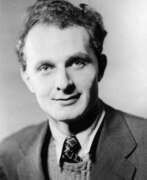

Stephen Harold Spender was an English poet, novelist and essayist whose work concentrated on themes of social injustice and the class struggle. He was appointed Poet Laureate Consultant in Poetry by the United States Library of Congress in 1965.
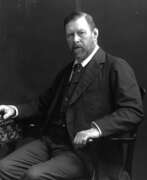

Bram Stoker, birth name Abraham Stoker, is an Irish writer, theater business manager and critic.
Stoker attended Dublin University and Trinity College, where he studied mathematics. He served for ten years at Dublin Castle and also worked as a drama critic for the Dublin Evening Mail (later Evening Mail) newspaper, where he met the actor Sir Henry Irving. From 1878 until Irving's death 27 years later, Stoker was his manager and accompanied him on his American tours, and later published his biography.
Stoker became world famous for his gothic horror novel Dracula, which was first published in 1897. The theme of mysterious and romantic vampires was and still is very popular in society. Stoker's novel has been reprinted many times, and the story itself has inspired countless interpretations and screen adaptations. Stoker wrote several other novels, including The Mystery of the Sea (1902), The Jewel of the Seven Stars (1903), and The Lady with the Shroud (1909).
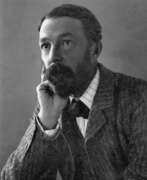

John Addington Symonds was an English poet and literary critic. A cultural historian, he was known for his work on the Renaissance, as well as numerous biographies of writers and artists. Although married with children, Symonds supported male love (homosexuality), which he believed could include pederastic as well as egalitarian relationships, referring to it as l'amour de l'impossible (love of the impossible). He also wrote much poetry inspired by his same-sex affairs.
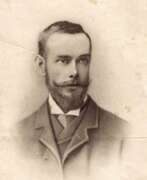

Francis Thompson was a British poet and literary critic.
Thompson received a Roman Catholic education at Ushaw Seminary College, also studying medicine in Manchester, but became addicted to opium. From 1885 he lived in poverty in London, where 1888 his first two poems were finally published. After that he published two more collections of poems. His unsettled and deprived life ended at the age of 47 from tuberculosis.
Thompson is now ranked among Britain's greatest Catholic poets. Francis Thompson's most famous poem is "The Heavenly Dog" (1893).
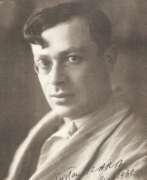

Tristan Tzara, originally named Sami (Samuel) Rosenstock, was a Romanian and French artist and writer best known as a founding figure of the Dada movement. Born in 1896 in Moinești, Romania, Tzara's influence extends across poetry, performance, and manifesto writing, marking him as a pivotal personality in 20th-century art and culture. His work challenged conventional norms and sought to disrupt the traditional boundaries of art, making him a central figure in the avant-garde community.
Dada, the movement with which Tzara is most closely associated, emerged as a reaction against the horrors of World War I, advocating for irrationality and anti-bourgeois protest. Tzara's contributions, including his manifestos, poetry, and performances, were instrumental in shaping Dada's legacy. His art and writings emphasized the importance of spontaneity and chaos, challenging the status quo and the very definition of art itself. Tzara's approach was not confined to a single medium; he explored poetry, playwriting, and critical theory, leaving a diverse and impactful body of work.
Though Tzara is not widely known for sculpture or painting in the traditional sense, his influence on these and other art forms is undeniable. His work and ideas laid the groundwork for later avant-garde movements, including Surrealism. While specific works of Tzara in museums or galleries were not detailed in the research, his legacy is preserved through the collections of major institutions worldwide, reflecting his enduring impact on the arts.
For collectors and experts in art and antiques, understanding Tzara's contributions provides insight into the radical shifts in culture and art in the early 20th century. His work remains a testament to the power of art to challenge, provoke, and transform. To stay informed about new product sales and auction events related to Tristan Tzara, sign up for our updates. This subscription ensures you're alerted to unique opportunities to engage with the history and legacy of a key figure in modern art.
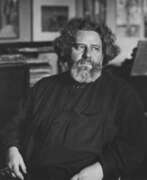

Maximilian Alexandrovich Voloshin (Russian: Максимилиа́н Алекса́ндрович Волошин) was a multifaceted Russian figure, known for his profound contributions as a poet, artist, literary critic, art historian, mystic, philosopher, and journalist. His work, deeply intertwined with the landscapes of Crimea and the ancient, complex terrains of Koktebel, reflects a geological, philosophical, and pantheistic precision, rather than geographical accuracy. Voloshin's watercolors of Crimean landscapes, notable for their lack of geographical precision but profound depth in geological and philosophical terms, are celebrated for capturing the essence of Crimea's natural beauty. His poetry and art, deeply influenced by symbolist movements, did not align with any single avant-garde art group, showcasing his unique stance as both an artist and a poet. Voloshin's life was a testament to his eccentricity and depth, filled with intellectual pursuits, extensive travels, and a commitment to community and humanism, particularly evident in his efforts during the tumultuous times of the Russian Civil War, where he sought to mediate between opposing factions.
Voloshin's contributions to Russian culture are significant, with his works offering insights into Russian history and philosophy. Despite periods of obscurity, particularly under Soviet rule, his legacy as a key figure of the Russian Silver Age endures, with his home in Koktebel now serving as a museum and a place of pilgrimage for many. His poetry, characterized by its philosophical depth and historical insight, has found resonance in modern times, not only within literary circles but also in music, with bands like Little Tragedies setting his poems to music.
For those interested in exploring the profound and visionary works of Maximilian Voloshin, his poetry and art continue to offer a window into the soul of Russian history and the natural beauty of Crimea. Collectors and experts in art and antiques might find the exploration of Voloshin's work both enriching and enlightening.
For updates related to Maximilian Alexandrovich Voloshin, including new product sales and auction events featuring his work, sign up for our newsletter. Stay connected with the legacy of a visionary poet and artist whose work transcends time and geography.
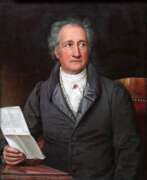

Johann Wolfgang von Goethe, a German polymath and writer, is celebrated as one of the most influential figures in the German language and Western culture. His vast array of works spans poetry, novels, plays, and scientific writings, reflecting his diverse interests and profound impact on various fields.
Goethe's early life in Frankfurt laid the foundation for his diverse interests. After studying law, he gained fame with "The Sorrows of Young Werther," which led to an invitation to the Weimar court. His contributions there were significant, including roles in the ducal council, mining supervision, and cultural endeavors like theater management and the botanical park's planning.
His literary achievements are vast, with notable works like "Faust" and "Wilhelm Meister's Apprenticeship," which delve into human nature and societal reflections. Goethe's "Sturm und Drang" period was marked by intense emotion and a break from traditional forms, influencing subsequent cultural movements.
Johann Wolfgang von Goethe's interest in science is equally noteworthy. He made contributions to biology, zoology, and color theory, advocating for a holistic view of nature and expressing skepticism toward restrictive scientific methodologies. His works in these areas reflect a deep desire to understand and articulate the natural world's interconnectedness.
For art collectors and experts, Goethe's influence extends beyond his literary and scientific contributions. His role in Weimar Classicism and his artistic endeavors offer rich insights into the period's cultural landscape, providing a multifaceted perspective on his legacy.
To stay informed about developments and events related to Johann Wolfgang von Goethe, consider signing up for updates. This subscription will keep you informed about new product sales and auction events related to Goethe's works and influence, offering exclusive insights for enthusiasts and collectors.
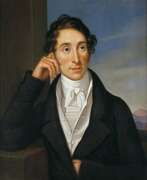

Carl Maria von Weber, full name Carl Maria Friedrich Ernst von Weber, was a German opera composer and conductor during the transition from classical to romantic music, pianist and music critic.
Weber was born into a musical and theatrical family, and his father cherished dreams of making him a second Mozart. The young Weber received his first appointment when he became the musical director of Duke Eugene of Württemberg, for whose private orchestra he wrote two symphonies, then he was secretary at the court of King Frederick I of Württemberg. At the same time he composed musical works, gaining experience and knowledge.
In 1813 Weber was appointed conductor of the opera in Prague, and four years later he was appointed director of the German opera in Dresden. Here he deployed his talents, taking on the entire job of preparing an opera production: he selected the repertoire, staff and actors; he handled the scenery, lighting and staging, as well as the orchestra and singers, taking special care to ensure that each performer fully understood the words and plot of each opera. The composer also found time to compose his own works.
During this period he created the opera The Free Rifleman (1821), where he was able to free German opera from French and Italian influences. The opera was first successfully staged in Berlin and then traveled throughout Europe. "The Free Rifleman" is the most popular German opera written to date, and it marked the beginning of German Romantic opera. Weber also wrote the operas Euryanthe (1823), Oberon (1826), and others.
Carl Weber composed many fugues, sonatas, concertos, and sacred music, and was also one of the significant piano virtuosos and music critics. From 1809 to 1818, he wrote a considerable number of reviews and quite incisive music criticisms. All his activities, music and critical writings promoted the ideals of Romanticism as an art in which feeling prevails over form and heart over head.
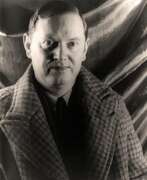

Evelyn Waugh, full name Arthur Evelyn St. John Waugh, was a British satirical writer, travel writer and historian.
Evelyn Waugh studied at Lancing College in Sussex and at Hertford College in Oxford. He then began traveling and writing, soon earning a reputation as a witty satirist. He visited Ethiopia and the Belgian Congo, and traveled to South America. His works are almost always based on personal experience; notable among the early ones are Decline and Fall (1928), Nasty Bodies (1930), Black Mischief (1932), and others.
During World War II, Evelyn Waugh served in the Royal Marines and the Royal Horse Guards. Written at this time, the novel "Return to Brideshead" (1945) is about an aristocratic English Roman Catholic family. In the trilogy "Men in Arms" (1952), "Officers and Gentlemen" (1955) and "Unconditional Surrender" (1961), the author conducted a serious analysis of the events of World War II, as an eternal struggle between good and evil, civilization and barbarism. Later on these works were filmed television series.
Evelyn Waugh also left a significant trace in journalism and literary criticism, he is considered one of the finest stylists in English prose of the XX century.


